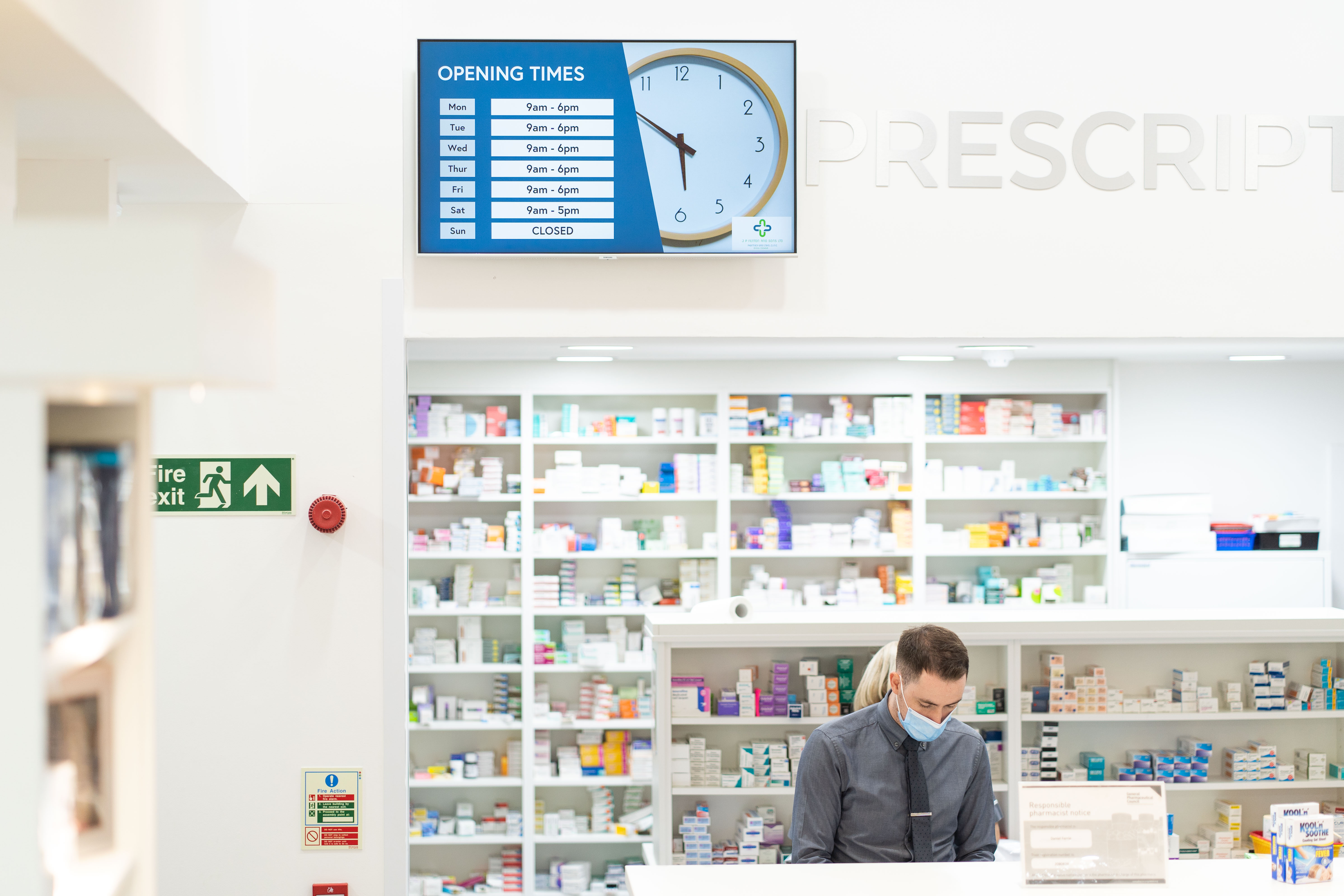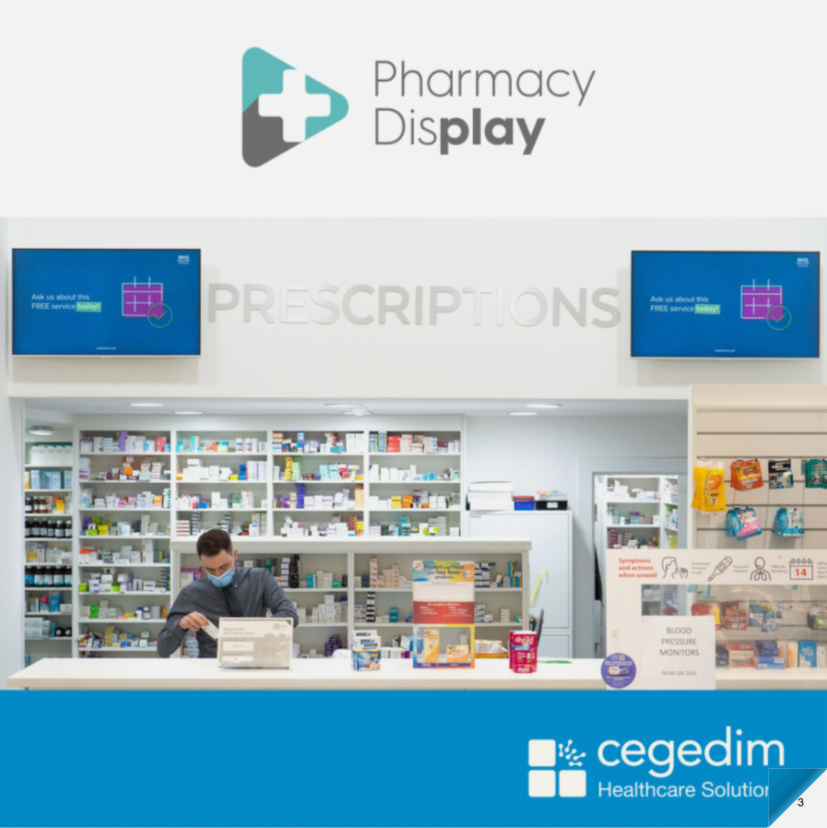

By Cegedim Healthcare Solutions
On Apr 1, 2022
Read time
5 minutes
Can you use consumer TVs for digital pharmacy displays?
When running a community pharmacy, you will be consciously looking for ways to save money while still reaping the benefits of great marketing communications. Why spend a big buck on commercial digital signage when you could simply use a regular TV? To help you decide which would be a better choice for your pharmacy, we’ve created a handy comparison guide to commercial screens and regular, domestic TVs.
In short, these two types of television screens may look quite similar, but looks can be deceiving. Read on to discover how commercial TVs are more compatible with digital signage use in your pharmacy, and can provide a better sales experience for your customers.
Are Consumer TVs Suitable for Commercial Digital Signage Displays?
If you're contemplating the use of a regular consumer TV as the digital display solution for your pharmacy, then you need to keep the following in mind:
Warranty
Consumer TVs typically come with a one-year warranty, which is standard for most home entertainment devices. However, it's important to note that this warranty becomes void once you decide to employ the TV within a commercial setting. That’s because consumer TVs are specifically designed for use in residential environments, and they possess certain limitations we’ll touch upon throughout this post.
Commercial TVs, on the other hand, come with more extended warranties, typically spanning three to four years. This extended warranty period reflects the robustness required for continuous commercial usage.
Length of Use
On average, consumer TVs in home settings can operate effectively for approximately six to eight hours without causing the internal components to overheat. Beyond this usage time, the device may become excessively hot and unsafe to touch, potentially posing a risk.
In contrast, digital displays in pharmacies typically run 24 hours a day, seven days a week. Commercial TVs are purposefully designed with this constant operation in mind, featuring advanced built-in cooling technologies to ensure they can operate continuously without the risk of overheating.
Brightness
The issue of brightness is noteworthy, particularly in areas where direct sunlight can cast a glare on the display, reducing the visibility of content. This is a common concern with consumer TVs.
Residential settings are usually much dimmer than commercial environments, further underlining why consumer TVs may not be the best choice for commercial applications. In contrast, commercial TVs are equipped to deliver a clear and vibrant display of up to 2,500 nits, ensuring content remains visible even in bright, sunny areas.
Orientation
Commercial displays exhibit remarkable versatility, effortlessly transitioning between landscape (16:9) and portrait (9:16) modes, catering to a wide array of content formats and layouts. In contrast, consumer TVs lack this inherent flexibility, which limits their adaptability within a commercial setting.
It's crucial to consider the placement of air vents within consumer TVs. Rotating consumer TVs into portrait mode can lead to overheating issues, primarily due to alterations in airflow caused by the reorientation.
Security
Most consumer television sets come equipped with control buttons positioned along the edges of the display. These buttons are really useful in a household setting, especially when a remote control goes missing or when the batteries are depleted.
However, when it comes to a commercial setting, these buttons can become a source of distress when managing and maintaining digital signage networks. For instance, a passerby through either mischief or mistake may tamper with the controls and change the output of the diplay. In addition, consumer TVs can't be controlled off-site, so if the display has been powered, the pharmacy’s head office will not be aware of it.
In contrast, commercial displays come equipped with safeguarded controls to prevent outside interference. Professional displays also offer a range of operating controls and commands that empower operators to disable specific modes and remotely reactivate screens should they be inadvertently powered off.
Input Connectivity
Commercial TVs offer a diverse range of input options, including HDMI, DVI, and VGA, making them highly adaptable to various devices and content sources. On the other hand, consumer TVs typically provide only HDMI input, limiting their connectivity options.
Transform your chemist’s bottom line with Cegedim’s Pharmacy Display, download our brochure here.
Durability and Use
Most modern consumer TVs are primarily designed for leisure activities, such as watching films, TV shows, or playing video games. They often feature a glossy display, suitable for environments with lower lighting conditions. Consequently, they are best suited for residential settings where usage typically doesn't exceed eight hours per day.
On the other hand, commercial TVs are engineered differently to meet the demands of continuous operation in diverse commercial applications. These displays are constructed with sturdier hardware, designed to showcase promotions, convey information, and disseminate urgent messaging. They are finished with an anti-glare coating to ensure better visibility in a variety of lighting conditions.
Long Term Cost Consideration
If your pharmacy is new to digital signage, it's tempting to opt for a lower-priced consumer TV and risk a voided warranty. While commercial displays come with a higher initial cost, they will provide a better return on investment (ROI) in the long run.
With consumer TVs, in the event of a fault, calling an engineer out will cost you at least £150, and this doesn't guarantee a resolution to the issue. Furthermore, if a TV cannot be repaired, the cost of replacing it will be significantly higher.
The extended warranty accompanying commercial TVs covers technical faults and engineer call outs, offering additional reassurances to pharmacy managers.
Commercial Digital Signage Displays Are Built For Purpose
Ultimately, while it is entirely possible to use a domestic TV for your pharmacy’s digital signage displays, the screen will lack the reliability and power of the commercial TV display. It’s important to be aware that while the nuts and bolts of the two may be similar on the surface, the internal hardware - and the software used in commercial digital signage displays - are much different.
Cegedim’s Pharmacy Display is a trusted global name that’s been improved based on input from our pharmacy customers.
With our displays, you have the option to let our dedicated team curate content, which includes public health messaging, or you can create your own branded product adverts to boost over-the-counter sales.



